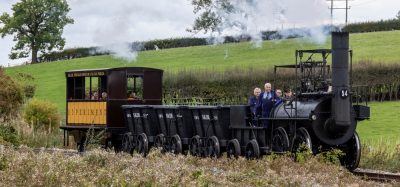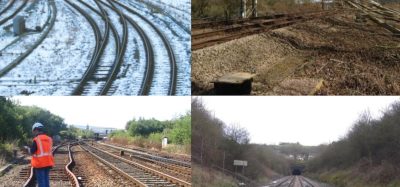A long and ongoing story – ETCS in Hungary
Posted: 23 January 2009 | | No comments yet
Signalling expert Péter Tóth maps the development of ETCS in Hungary.
Signalling expert Péter Tóth maps the development of ETCS in Hungary.
Hungarian State Railways (MÁV) has been using the traditional national ATP system (the so-called EVM) since the end of the 1960s. Introduction of this continuous coded 75 Hz track circuit-based track-to-train information system was a big success, because originally there was no on-board information about trackside signals.
During the 1970s and 1980s, the most important lines – in parallel with the automatic block system – were equipped with this ATP system.
In spite of several advantages of EVM, for example continuous transmission of trackside information, well-proven adaptability to the relay-based Domino interlocking, reliability, etc., the quantity of information which could be transmitted to the cab was not enough.
Therefore, in the second half of the 1990s, MÁV began to search for a new ATP – and of course, the studies focused on available European systems.
In this period, the UIC and ERRI, later UNISIG, were dealing with the preparation of ETCS specifications, therefore signalling experts of MÁV – acting on the advice of Mr. Frøsig – decided upon ETCS, as the the new ATP of Hungary.
At the end of the 1990s, UNISIG tried to persuade the EU that ETCS would be applicable as a common ATP of Europe and that a test section should be found. UNISIG, ÖBB and MÁV formed the ETCS Vienna Budapest Consortium (ETCS VB) and created a short (but a border-crossing nonetheless) ETCS section in Austria and in Hungary, between Bruck a.d. Leitha and Kimle over the Hegyeshalom border station. The test trips were successful and ETCS in Europe was given a green light!
ETCS systems in Hungary – the past, present and future
Pilot line for the Slovenian/Hungarian border
In the second half of the 1990s, after dissolution of the former Yugoslavia, Slovenia remained the only one neighbouring country of Hungary which did not have a railway connection.
Therefore, the government of both countries came to a decision to build a new railway connection. This new railway line has now been built between Murska Sobota (Slovenia) and Zalalövő (Hungary).
With the introduction of a new line, MÁV did not want to equip it with the traditional train detection (track circuit) system and ATP and therefore the call-for-tender for this line included electronic interlocking with ETCS Level 1 (according to SRS 2.0.0). Electronic interlocking on four stations were taken into operation in March 2002 and ETCS tests started in the autumn of the same year. The trial runs were successful, and in the spring of 2003, the EEIG ERTMS Users Group ran field tests (aimed at ETCS-rules) on this line, between Zalacséb and Őriszentpéter stations.
The main purpose of this 25km-long pilot section was for testing (for loco drivers, traffic control personnel and signalling maintenance staff) and to gain valuable experience about the system’s behaviour.
This section was also particularly important because it was Europe’s first border-crossing ETCS-line. The common border station, Hódos (in Slovenia), owned by Slovenian Railways, was equipped with a Siemens SIMIS-W interlocking system. Since it was decided that from Hódos to Hungary MÁV-operated trains were to be travelling, MÁV intended to install ETCS Level 1 on the Hungarian side of Hódos station. Therefore, a strong cooperation was needed from both suppliers, Alcatel Austria and Siemens Austria, from both Infrastructure Managers, SZ and MÁV, and last, but not least, from the Slovenian Transport Authority. Of course we would have wanted to use it in commercial operation, but up to now, we could not get permission from the National Transport Authority.
The great challenge: the Vienna to Budapest connection
The success of ETCS VB trial runs between 1999 and 2000, had a big impact on the ETCS preparatory activities in Hungary. MÁV launched a call-for-tender in 2002 for the Hungarian section of the Budapest to Vienna line (174km, between Budapest-Kelenföld and Hegyeshalom).
The winner was Alcatel Austria and the contract was signed at the end of 2003. It included the preparation of a complete Trackside System with necessary adaptation to the station interlocking (mostly to relay ones, and in three stations to electronic ones (SIMIS-C, Elektra) and open-line interlocking (relay block system and level crossings)). Beside TSS works, the supplier had to install OBS on 17 V63 electric engines. The ETCS TSS of two stations, Győr and Komárom, were taken into operation as a temporary solution, because the call-for-tender for their electronic interlocking was ongoing. The final ETCS-solution was part of the call-for-tender for station interlocking. At the end of 2005, ETCS TSS of the line was declared ready by the supplier. In September of the same year, the two neighbouring railways organised two ceremonial train trips from Vienna and from Budapest to Mosonmagyaróvár (in Hungary), celebrating the readiness of the first border crossing ETCS line.
The ceremony was attended by Jacques Barrot, European Commissioner for Transport (see Figure 2). At the end of 2005, exhaustive TSS examinations began (in some cases in terrible weather conditions; see Figure 3 and Figure 4).
This actually came at the right time, because Budapest played host to the ERTMS World Conference in 2006. Technical visits were arranged as part of the conference, and two test trains travelled from Budapest to Bicske station, demonstrating some special traffic situations managed by ETCS. After a lot of negotiations, clarification meetings, troubleshooting and re-testing procedures, at the end of 2007 MÁV started the trial ETCS operation with three V63 locomotives, in the first period with freight trains only. By mid-2008, Siemens, as OBS supplier for ÖBB, began its trial trips in Hungary between Hegyeshalom and Győr. These trips have been carried out with normal (commercial) passenger trains.
The future: ERTMS/ETCS strategies of MÁV
By 2006, MÁV was intent on installing ETCS Level 1 on pan-European Corridors IV, V and X and also ERTMS freight Corrridors D and E. A ministry decision in 2006, forced MÁV to change strategies and instead steer towards Level 2. (Unfortunately by 2006, some line reconstructions had already been prepared for Level 1 installation).
In line with EU Directives, Hungary had to prepare strategies and plans for migration. According to our plans, between 2007 and 2013, the following routes have been appointed for ERTMS/ETCS Level 2 TSS installation:
- Hódos-Boba (Corridor V and ERTMS Corridor D)
- Boba-Celldömölk-Győr (alternative route of Corridor V and ERTMS Corridor D, in Győr connected to Corridor IV)
- Budapest-Szolnok-Szajol-Békéscsaba-Lőkösháza (Romanian border) (Corridor IV and ERTMS Corridor C)
- Szajol-Debrecen (alternative route of Corridor V)
- Rajka (Slovakian border) – Hegyeshalom (Corridor IV)
- Székesfehérvár-Budapest (Corridor V and ERTMS Corridor D)
- Sopron (Austrian border) – Szombathely – Szentgotthárd (Austrian border) (GySEV line)
Between 2013 and 2020, the following lines are planned to be installed with ETCS Level 2 systems:
- Debrecen-Nyíregyháza-Záhony (Ukrainan border) (Corridor V)
- Not finally decided, but other branches of Corridor IV and V can be installed with ETCS Level 2, as the following ones:
- Budapest-Miskolc-Nyíregyháza (Corridor V)
- Budapest-Pusztaszabolcs-Dombóvár-Pécs-Villány-Magyarbóly (Croatian border) (alternative route of Corridor V)
- Székesfehérvár-Nagykanizsa-Murakeresztúr (Croatian border) – Gyékényes (Croatian border) (alternative route of Corridor V)
- Dombóvár-Kaposvár-Gyékényes (Croatian border) (alternative route of Corridor V)
- Budapest-Szob (Slovakian border) (alternative route of Corridor IV)
- Komárom-Komarno (Slovakian border) (alternative route of Corridor IV)
- Budapest-Kiskunhalas-Kelebia (Serbian border) (Corridor X)
- Connecting lines to the freight terminals
Of course, for ETCS Level 2 lines, GSM-R systems have to be installed. Unfortunately, because of very slow public procurement, up to now there is no result in GSM-R call-for-tenders. Hopefully, during the first half of 2009, the winner of this tender will be published and at the end of the year the contract can be signed, and by 2010, the planned beginning of ETCS Level 2 installation on the Hódos-Boba line can be used for ETCS communication.
Requirements from the National Transport Authority
As I mentioned earlier in this article, the traditional national Hungarian ATP system provides continuous track-to-train information. It is a great advantage, because upgrades and downgrades are both available. From a safety point of view, downgrading is very important, but from a line capacity point of view, upgrade is very useful. In the case of ETCS Level 1, these funcions can be available with infill elements only. However, MÁV did not want to install either a lot of infill balises or Euroloops and there was no GSM-R for radio-infill, so an acceptable solution for the National Transport Authority had to be found.
MÁV had no choice but to demand the EVM-infill function as a non-interoperable solution for OBS. Of course, MÁV did not have the right to demand a non-interoperable solution from other Railway Undertakings, therefore other measurements had to be taken to fulfil requirements of the Authority, giving permission for foreign ETCS train operators.
These measurements are only temporary and they are applicable until installation of Level 2 or, at least, of radio infill is complete. Here I must give my personal opinion: ETCS Level 1 with national ATP infill is not interoperable, but extremely useful. In case of this solution we can take advantage of the available track circuit based continuous system together with numerous information of ETCS.
Since traditional ATP (EVM) has not been available on our new line towards Slovenia, we could not use the above mentioned EVM-infill. This year, MÁV will have a call-for-tender for ETCS Level 2 TSS of the whole Boba-Hódos line covering our short pilot section, and we did not want to apply additional solutions used on the Budapest-Hegyeshalom line.
Level crossings and ETCS – a possible solution
As many of you know, the area of level crossings has not been covered – up to now – neither in FRS nor in SRS of ETCS. In Hungary, there are a lot of level crossings on ERTMS and pan-European Corridors and they will remain for the foreseeable future because the planned maximum speed in Hungary is 160km/h. Therefore – in absence of functional and system specifications – we have to elaborate our own, but ETCS-conform requirement specification especially for level crossing management. Of course, the required functional solutions must not be opposing to available requirements.
First of all, in Hungary there are two main types of level crossings: in ‘station area’ and in ‘open line’.
In ‘station area’ level crossings in Germany are an integral part of a station interlocking (the level crossing shall be locked as a route element, like a point or derailer).
An ‘open line’ level crossing is independent from other elements (e.g. block signals). Therefore, an ‘open line’ level crossing has independent balises on both sides, to inform the approaching train about the state of LX (see Figure 5). MÁV retain this solution in case of ETCS Level 2 TSS, i.e. trains with Level 2 OBS will be informed via balises. These balises transmit several TSRs in case of LX-disturbance; speed of TSR depends on severity of disturbance. Distance between the level crossing and TSR-balises depends on braking distance and highest speed applicable on the line. As a station level crossing is part of the station interlocking, there will be no separate TSR-balise, but telegram sent to the train contains all the route-information.
Conclusion
In the second half of 1990, Hungarian State Railways, together with ÖBB, was among the pioneers dealing with ERTMS/ETCS. Nowadays, with over 10 years of ETCS history, a decision about our Level 1 systems seems a little bit early. Perhaps today we would skip this Level 1-phase of introduction of ETCS. But, on the other side, we have gained so much experience with these two lines.
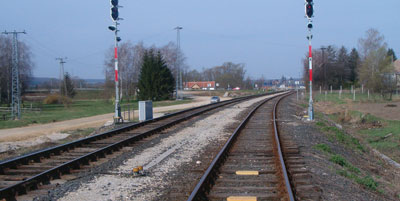

Figure 1: A section of the railway line between the Slovenian and Hungarian border - this picture shows the approach to Zalalövő station
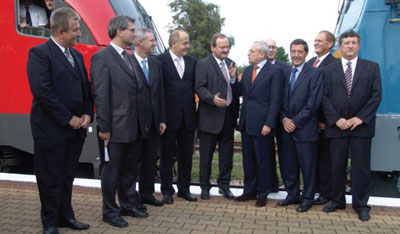

Figure 2: A ceremony took place in September 2005 to celebrate the completion of recent works
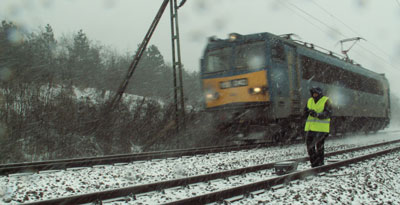

Figure 3: TSS examinations had to be carried out, even in extreme weather conditions
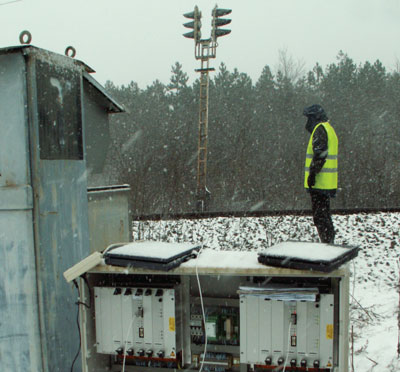

Figure 4: TSS examinations had to be carried out, even in extreme weather conditions
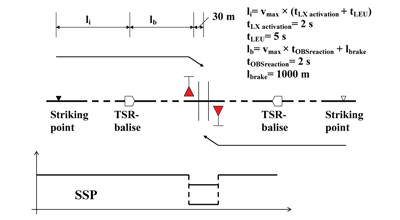

Figure 5: Diagram to show balise positioning
Global Railway Review Autumn/ Winter Issue 2025
Welcome to 2025’s Autumn/ Winter issue of Global Railway Review!
The dynamism of our sector has never been more apparent, driven by technological leaps, evolving societal demands, and an urgent global imperative for sustainable solutions.
>>> Read the issue in full now! <<<
Issue
Related topics
European Rail Traffic Management System (ERTMS), European Train Control System (ETCS), Signalling, Control & Communications




